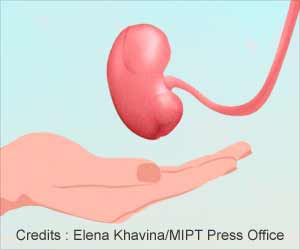The reason why a baby's brain is flexible and changes easily has been discovered by scientists, who say that it is because the brain still has to grow.

They showed that neuronal connections in the visual cortex of cats are restructured during the growth phase and that this restructuring could be explained by self-organisational processes.
The brain is continuously changing-neuronal structures are not hard-wired, but are modified with every learning step and every experience.
However, certain areas of the brain of a newborn baby are particularly flexible.
In animal experiments, the development of the visual cortex can be strongly influenced in the first months of life, for example, by different visual stimuli.
Nerve cells in the visual cortex of fully-grown animals divide up the processing of information from the eyes: Some "see" only the left eye, others only the right.
Advertisement
Headed by Matthias Kaschube, the researchers showed that during growth, these structures are not simply inflated - columns do not become larger but their number increases.
Advertisement
The number of nerve cells remains almost unchanged, a large part of the growth of the visual cortex can be attributed to an increase in the number of non-neuronal cells.
These changes can be explained by the fact that existing cells change their preference for the right or the left eye.
In addition, another of the researchers' observations also points to such a restructuring-the arrangement of the columns changes.
"This is an enormous achievement by the brain - undertaking such a restructuring while continuing to function. There is no engineer behind this conducting the planning, the process must generate itself," said Wolfgang Keil, first author of the study.
The researchers used mathematical models and computer simulations to investigate how the brain could proceed to achieve this restructuring.
The scientists showed that when the tissue grows and the size of the columns is kept constant, the columns in the computer model change exactly as they had observed in their experimental studies on the visual cortex of the cat-the stripes dissolve into a zigzag pattern and thus become more irregular.
In this way, the researchers provide a mathematical basis, which realistically describes how the visual cortex could restructure during the growth phase.
The study is published in PNAS.
Source-ANI












